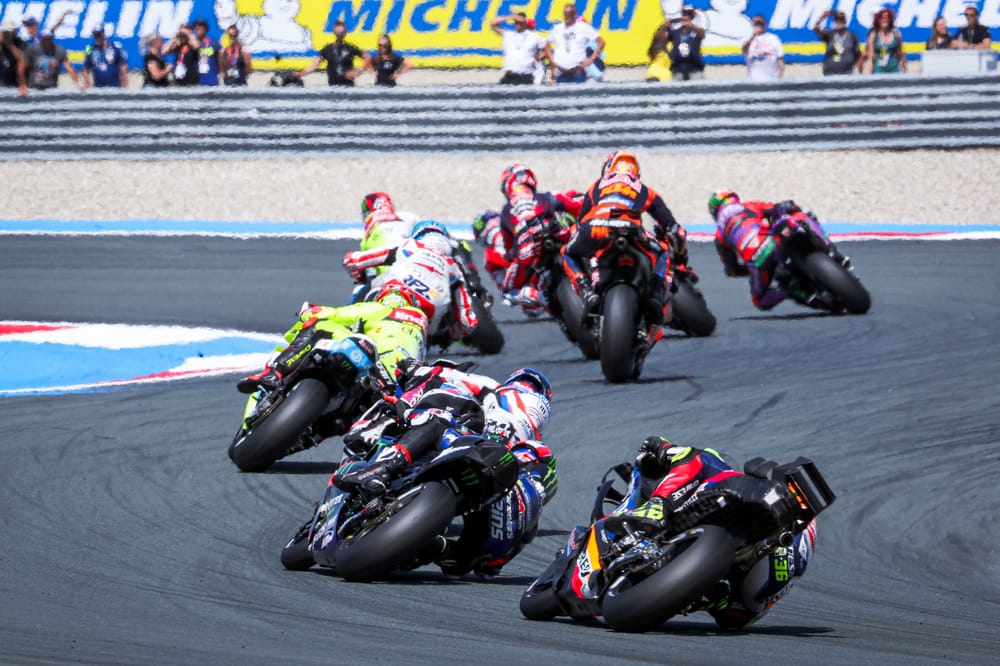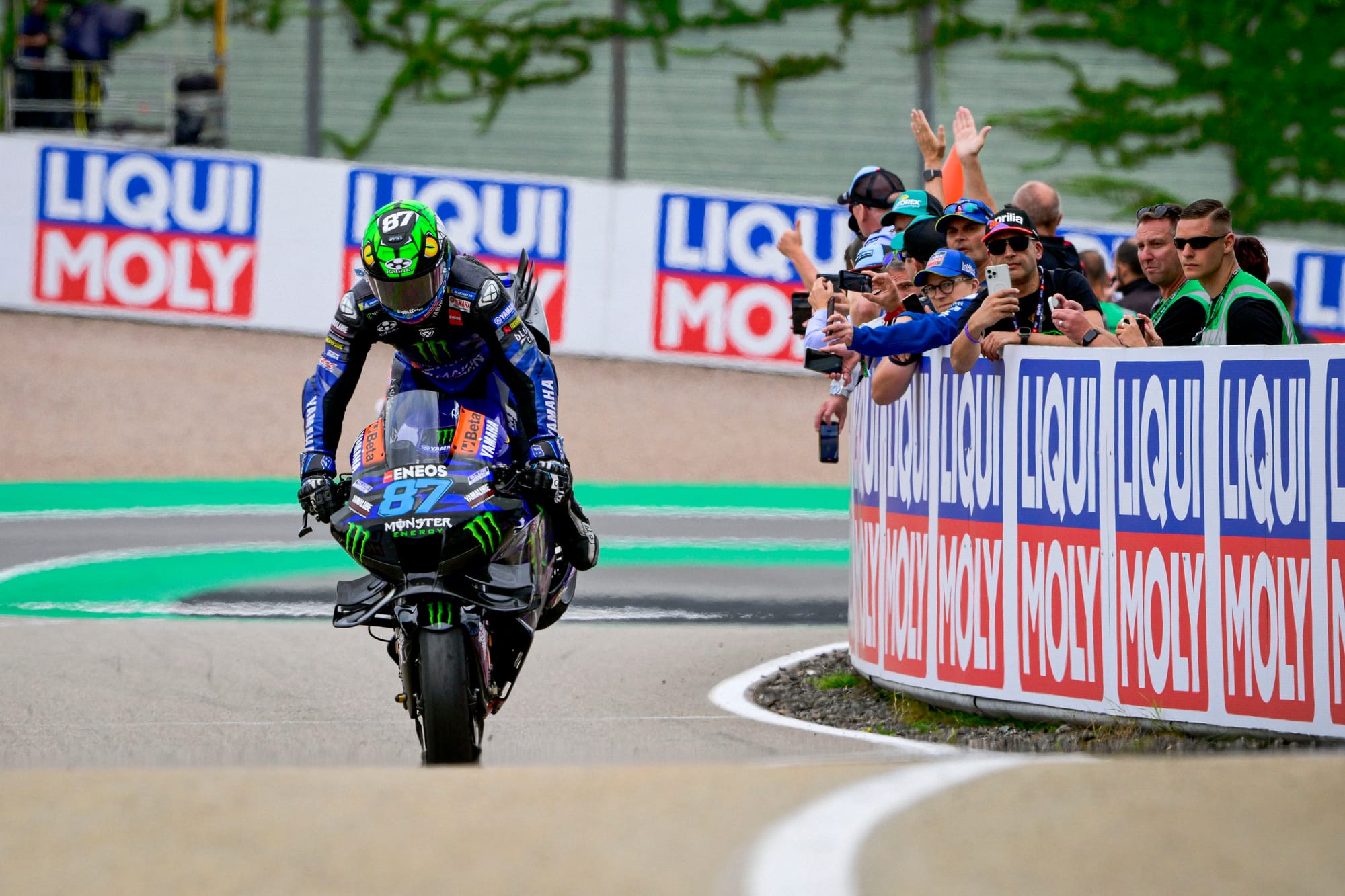Last year, the wholesale revamp of MotoGP's concession system prompted consternation from Ducati.
Though it voted to rubber-stamp the new rules, Ducati made its disagreement clear. It clearly took no issue with the breaks afforded to Yamaha and Honda - probably also because it rightly did not see them as immediate threats - but was unhappy, at least going by the words of tech chief Gigi Dall'Igna and lead rider Pecco Bagnaia, at having its own testing allowances and wildcard opportunities culled while competitive European rivals KTM and Aprilia got meaningful breaks.
A slightly iffy start to Ducati's season - by its own monumental standards - largely resulting from vibrations from the new-construction Michelin rear tyre suggested briefly that, perhaps, Ducati would be under siege earlier than expected and its concession status of 'Rank A' compared to 'Rank C' for Aprilia and KTM - with 'Rank B' vacant - would no longer be representative of competitive reality.
It is that kind of concern, after all, that prompted MotoGP to build in half-term 'windows' as part of this rule, with concession statuses reappraised at the summer break in case anybody stole a march on their opposition or got much worse.
There's a whole subset of complicated rules dealing with how a mid-season change of concession status would be put into reality for factories. Those rules are a safeguard against this system misfiring - and they are a safeguard that, now that we've arrived at that first reassessment window, have not even come close to being called into action.
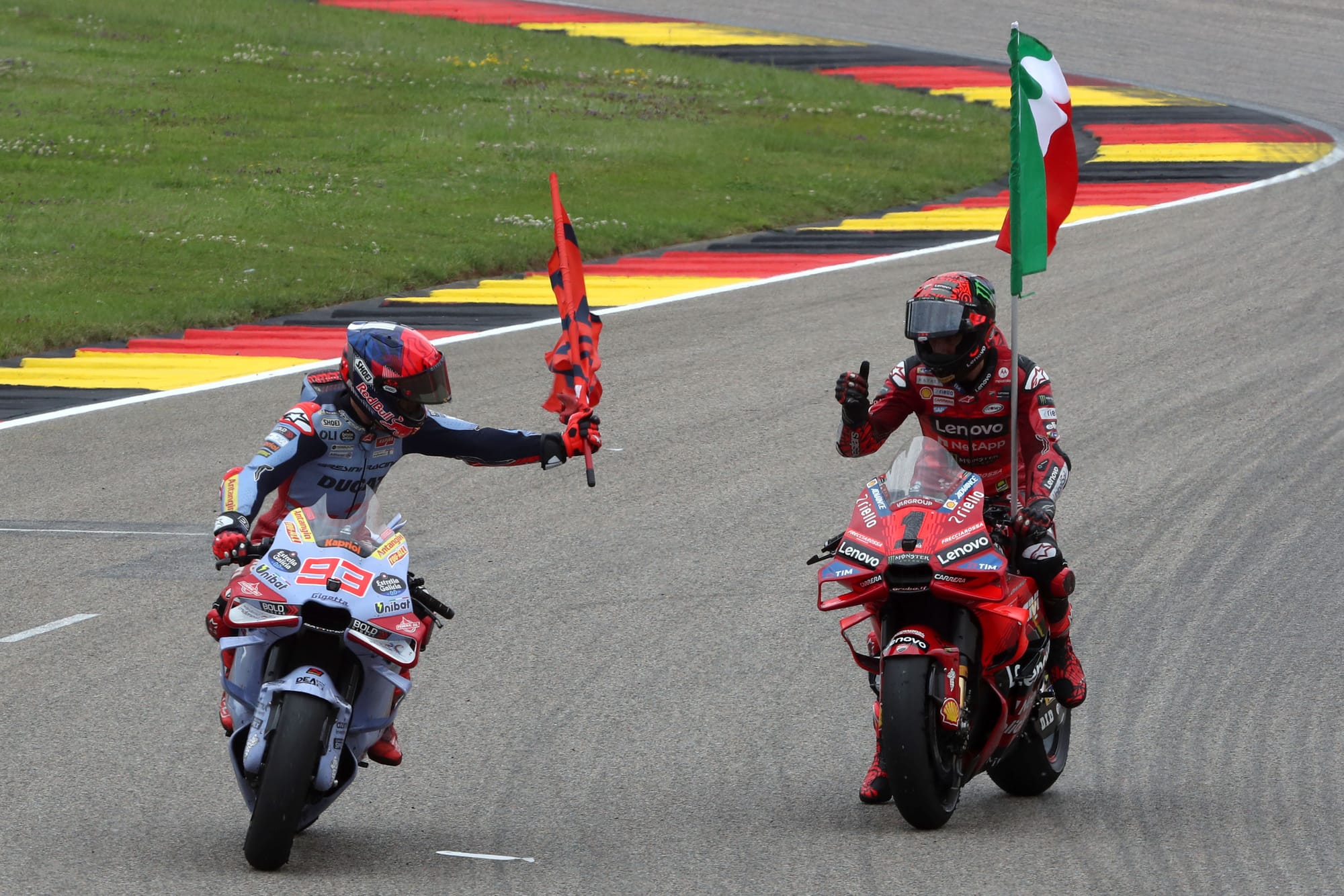
Since getting its nose bloodied by Maverick Vinales and his Aprilia at the Circuit of the Americas, Ducati has locked out every grand prix podium. At the Sachsenring last time out, it claimed a 1-2-3-4-5 that should've had a -6 attached to it, too, if not for Jorge Martin's penultimate-lap crash.
After scoring 96% of the available maximum points through 2023 in the constructors' standings, it has racked up 95% so far in 2024. This has come against the backdrop of Ducati's year-old machinery, half of its roster, being markedly less competitive than last year, albeit with the presence of Marc Marquez on one of them offsetting the impact somewhat.
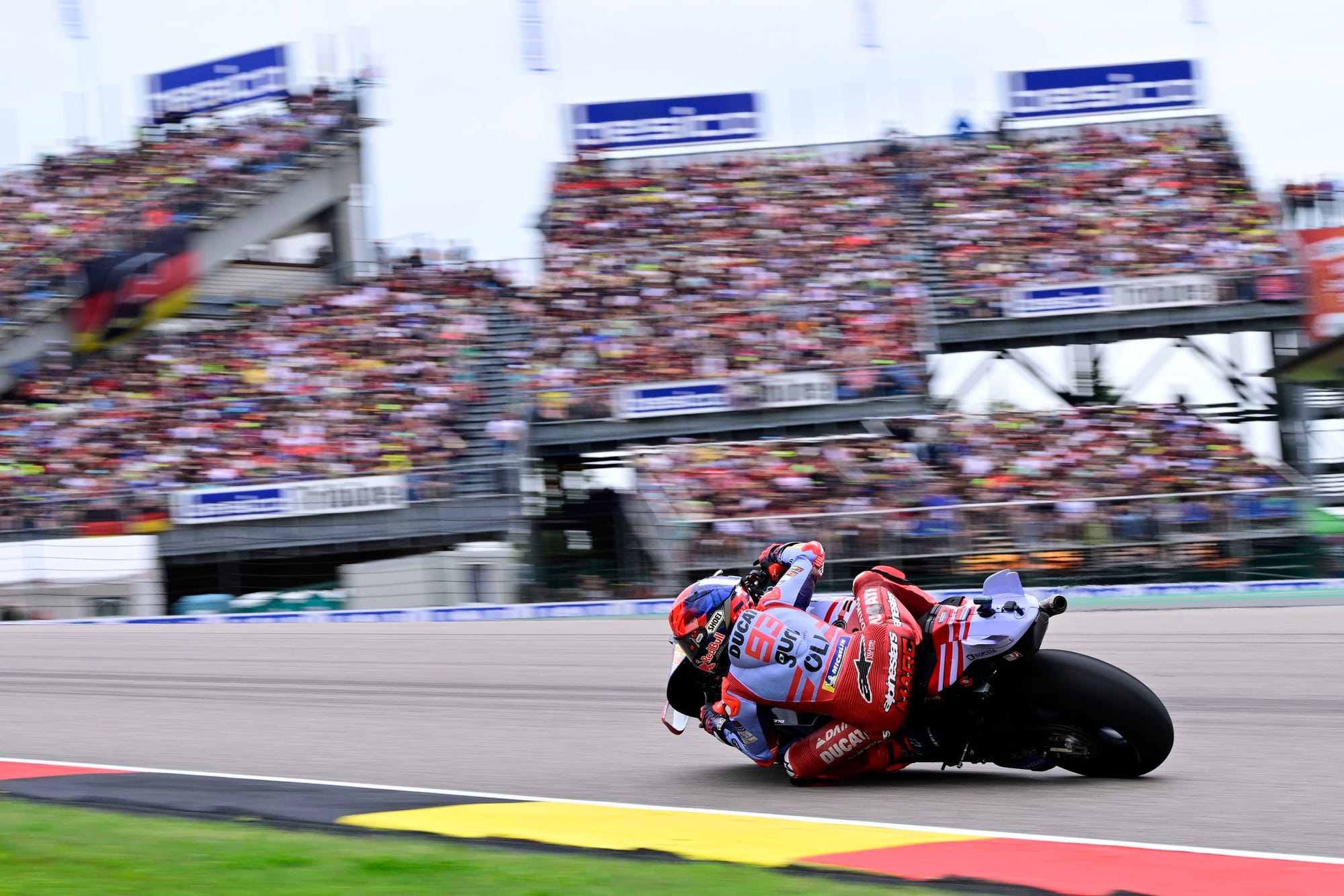
For the rest of 2024, concession status is calculated by the percentage of constructors' points scored from the conclusion of last year's summer break to the start of this year's - a span covering 20 races and 19 sprints (because of the Phillip Island cancellation).
And, just like Ducati, none of its rivals have come even close to changing their concession status.
Percentage of total points available
Rank A (>=85%): Ducati (96%)
Rank B (>= 60% < 85%): N/A
Rank C (>= 35% < 60%): KTM (50%), Aprilia (48%)
Rank D (<35%): Yamaha (21%), Honda (16%)
Not only that, but these numbers strongly suggest all five manufacturers will head into 2025 retaining the same status (which will be determined on the basis of 2024 overall).
Ducati would have to be much worse than it has been in ages to slip into 'Rank B', while Aprilia and KTM would have to score a good seven-eight-nine points more per round to climb there.
The differences between those ranks are, really, fairly negligible anyway (unless your name is Ducati's trusty wildcard Michele Pirro). The real concessions are in 'Rank D' - and Yamaha and Honda have been so turgid to start this season, considerably worse than last year by every metric, that they would basically have to perform at near-Ducati levels for the rest of the season to even dream of denying themselves full concession freedom.
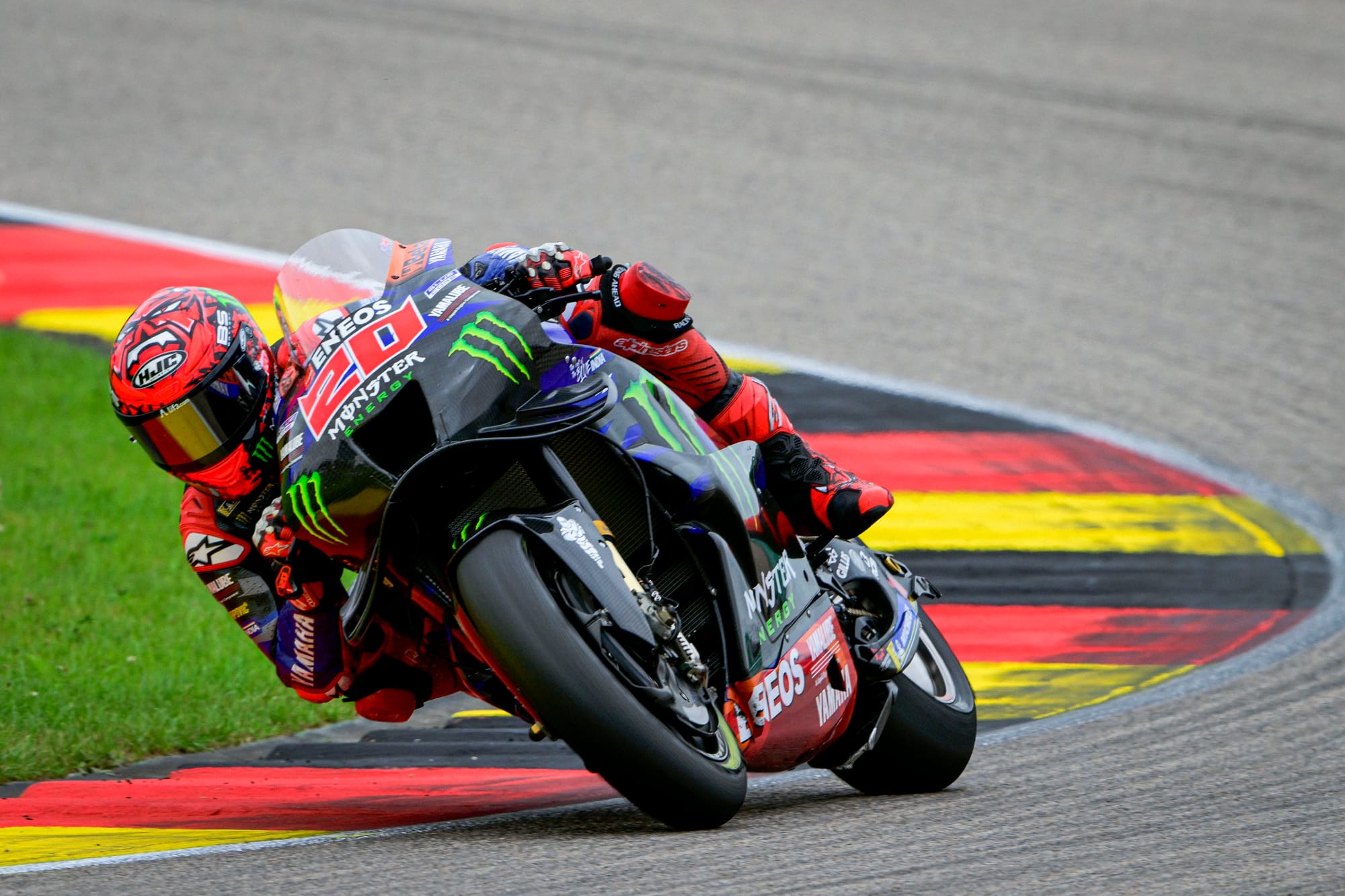
Yamaha has so far picked up 14% of the points available to it this year. Honda is on a horrifying 7%.
So, does all that mean the concessions revamp hasn't worked at all? Or is the lack of major shifts in performance an indication of robustness?
We will not know that for a while yet. The foundations for the current all-conquering Ducati GP24 were laid in a pre-'Rank A' era. Impacts on bike development are never immediate, and certainly not when you're talking about fairly gentle restrictions like no wildcards or slightly fewer test tyres.
While Ducati railed against the idea of KTM and Aprilia getting breaks, the big impetus was always about Honda and Yamaha and giving them a chance to accomplish anything at all before the 2027 reset.
So far, they are not doing that, but they're clearly at least making use of their regulatory freedoms. Yamaha has already updated its engine and will do so again in-season (something only 'Rank D' factories are allowed to do), both manufacturers are ramping up aero development, and both are logging hours and hours of private testing.
It is, at the very least, not far-fetched to suggest the existence of the concessions system has played a big part in Yamaha being able to hang on to Fabio Quartararo - an elite rider its current M1 otherwise has no right to - and in Honda seemingly being on the verge of officially retaining Joan Mir.
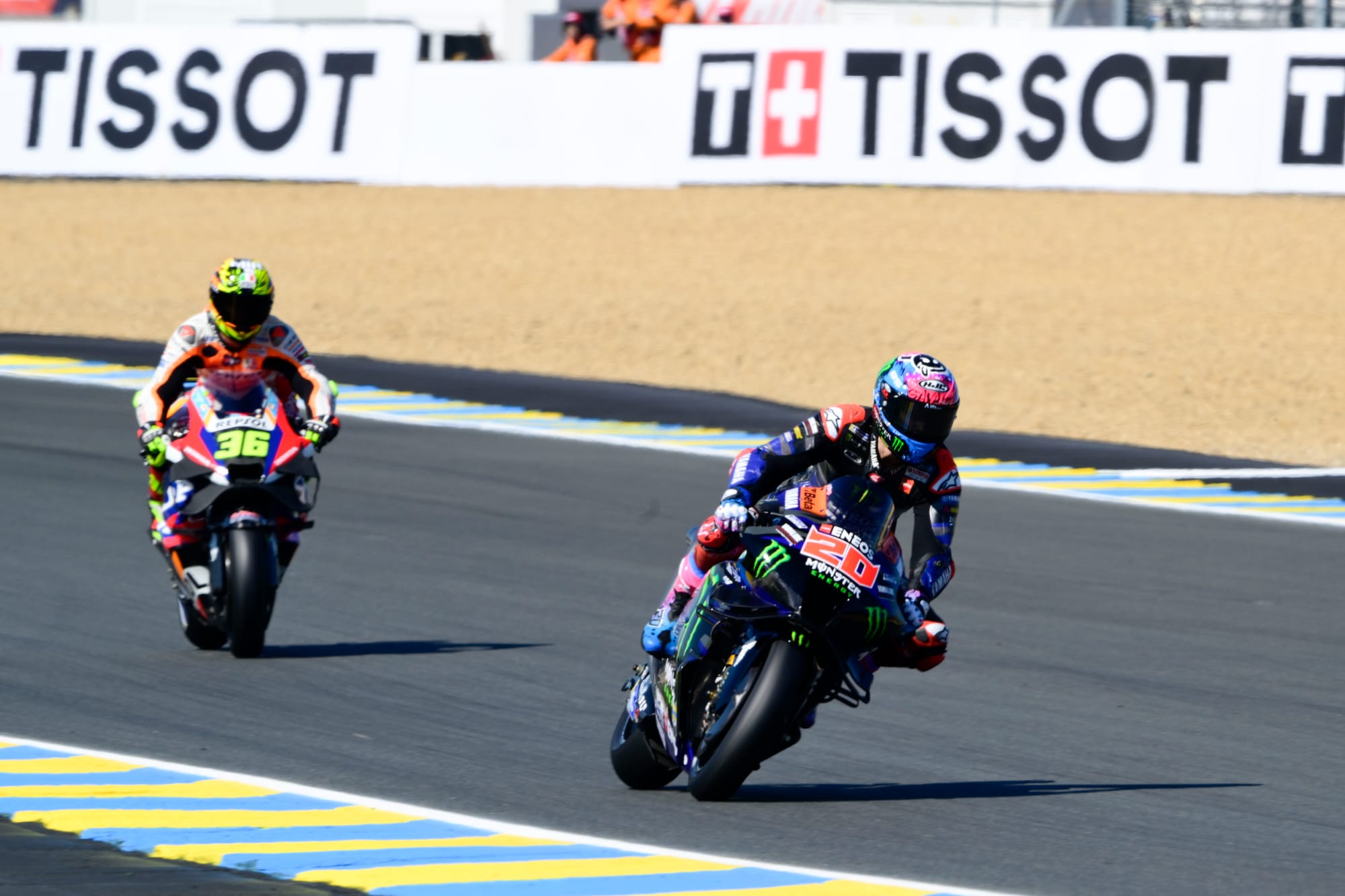
But it's also fair to wonder, given consistent performance patterns between Ducati and its nearest rivals, whether anyone in MotoGP will feel a tinge of impatience and push to tinker with the system further.
Truthfully, it feels unlikely, also because KTM and Aprilia are already making gains on other fronts - specifically poaching riders from Ducati, which will also go into 2025 down two bikes - that should have a much bigger impact on the fight at the front next year than any concession status shuffling.


